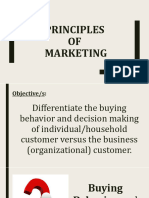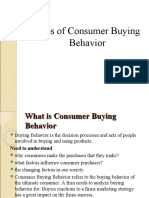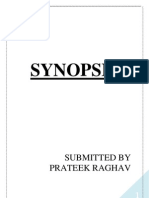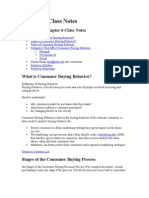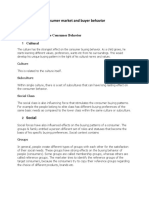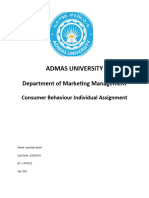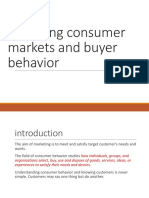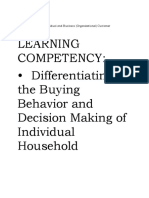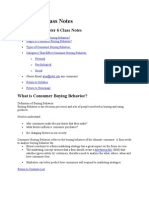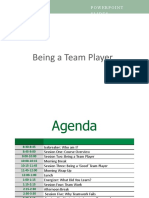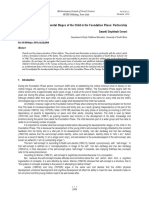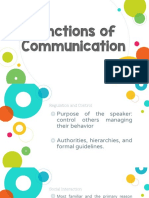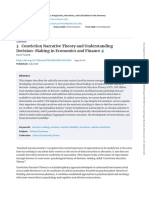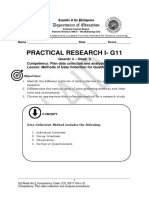0% found this document useful (0 votes)
18 views6 pagesPOM - Unit 3 - Notes
Consumer Buying Behavior encompasses the decision processes and actions of individuals when purchasing and using products, influenced by various factors. The buying process consists of six stages, from problem recognition to post-purchase evaluation, and can vary in complexity based on the level of involvement in the purchase. Additionally, buying roles within a buying center highlight the collaborative nature of purchasing decisions in organizations, contrasting with the simpler consumer buying behavior.
Uploaded by
avbCopyright
© © All Rights Reserved
We take content rights seriously. If you suspect this is your content, claim it here.
Available Formats
Download as PDF, TXT or read online on Scribd
0% found this document useful (0 votes)
18 views6 pagesPOM - Unit 3 - Notes
Consumer Buying Behavior encompasses the decision processes and actions of individuals when purchasing and using products, influenced by various factors. The buying process consists of six stages, from problem recognition to post-purchase evaluation, and can vary in complexity based on the level of involvement in the purchase. Additionally, buying roles within a buying center highlight the collaborative nature of purchasing decisions in organizations, contrasting with the simpler consumer buying behavior.
Uploaded by
avbCopyright
© © All Rights Reserved
We take content rights seriously. If you suspect this is your content, claim it here.
Available Formats
Download as PDF, TXT or read online on Scribd
/ 6







